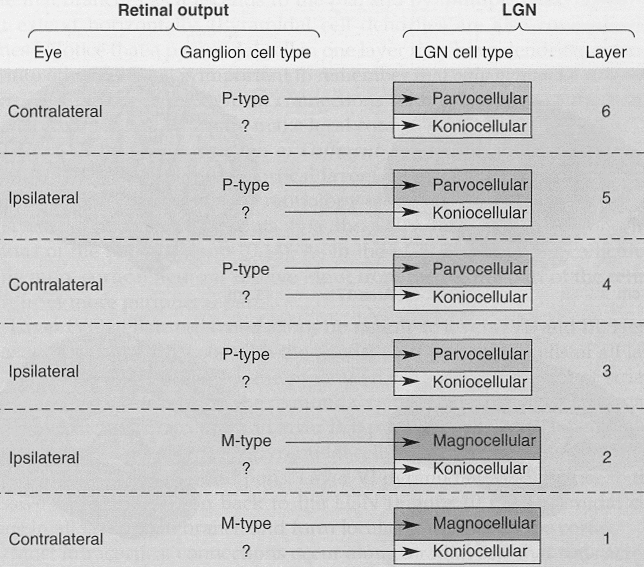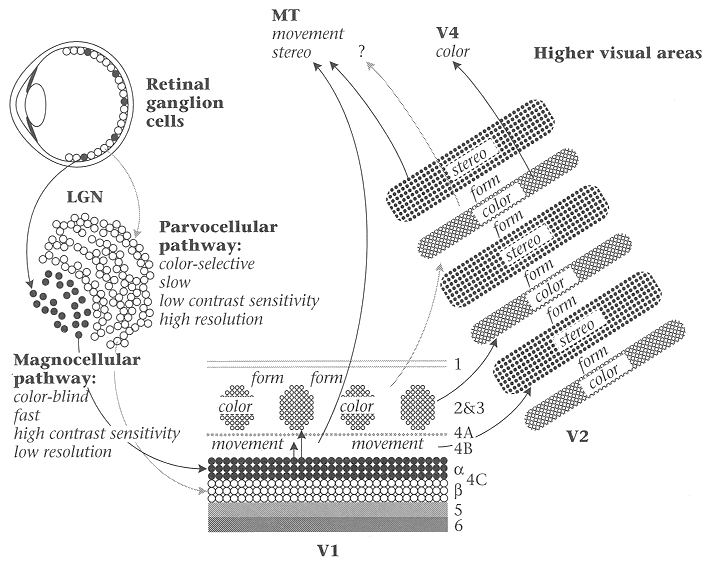From LGN magnocellular layers 1 (controlateral) and 2 (ipsilateral) to V1
layer 4C![]() then to 4B, which then projects to extrastriate cortical
areas such as the middle temporal area (MT), medial superior temporal area
(MST), etc. Cells in layer 4B are simple cells that are selective to
orientation, direction of motion. While cells in layer 4C
then to 4B, which then projects to extrastriate cortical
areas such as the middle temporal area (MT), medial superior temporal area
(MST), etc. Cells in layer 4B are simple cells that are selective to
orientation, direction of motion. While cells in layer 4C![]() respond
to only one eye (monocular), many cells in layer 4B respond to both eyes
(binocular).
respond
to only one eye (monocular), many cells in layer 4B respond to both eyes
(binocular).
The M pathway is also called the dorsal pathway and is thought to be specialized for the analysis of visual motion.
From LGN parvocellular layers 4, 6 (controlateral) and 3, 5 (ipsilateral)
to V1 layer 4C![]() and then to both blob and interblob areas in layers
2 and 3, which then project to extrastriate cortical areas V2, V4, and
inferiotemporal area (IT), etc. Cells in layers 2 and 3 are complex cells
that are selective to orientation. While cells in layer 4C
and then to both blob and interblob areas in layers
2 and 3, which then project to extrastriate cortical areas V2, V4, and
inferiotemporal area (IT), etc. Cells in layers 2 and 3 are complex cells
that are selective to orientation. While cells in layer 4C![]() are
monocular, many cells in layers 2 and 3 are binocular.
are
monocular, many cells in layers 2 and 3 are binocular.
The P pathway is also called the ventral pathway and is thought to be specialized for the analysis of object shape.
From LGN koniocellular layers (ventral of 1, 4 for controlateral and ventral 2, 3 for ipsilateral) to the blobs of in V1 layers 2 and 3, which then projects to extrastriate cortical areas such as V2 and V4. Most of the cells in the blobs have circular RFs and are not sensitive to orientations. Over half of them are sensitive to colors. There are three types of blob cells: (a) color-opponent center-surround RFs, (b) color-opponent center-only RFs, and (c) color-opponent center/color-opponent surround (double opponent) RFs. (See later chapter on color).
The Blob pathways is thought to be specialized for the analysis of color.

